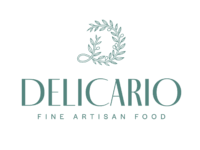June 22, 2024
The Rising Trend of Sustainable Homes in the Real Estate Market: Explained
Sustainable homes are rapidly becoming a significant trend in the real estate market. As environmental concerns grow and more individuals seek eco-friendly lifestyles, the demand for sustainable living solutions is increasing. Understanding the key aspects of this trend can help you make informed decisions whether you’re buying, selling, or just curious about the future of housing.
Eco-Friendly Building Materials
One of the primary drivers of sustainable homes is the use of eco-friendly building materials. These materials, such as reclaimed wood, bamboo, and recycled metal, minimize environmental impact and often provide superior durability and aesthetic appeal. By choosing sustainable wood products, you contribute to reducing deforestation, lowering greenhouse gas emissions, and supporting sustainable forestry practices. Moreover, these materials can offer unique and attractive design elements, making your home both stylish and environmentally conscious.
● Reclaimed Wood: Reclaimed wood comes from old barns, factories, and warehouses, repurposing timber that would otherwise go to waste. It offers a unique, rustic look that adds character and history to your home while preserving natural resources.
● Bamboo: Bamboo grows much faster than traditional hardwoods, making it a highly renewable resource. Its strength and flexibility make it an excellent choice for flooring and cabinetry, combining sustainability with style.
● Recycled Metal: Using recycled metal for structural components and finishes reduces the demand for new metal production, which is energy-intensive. Recycled metal can also be moulded into various forms, providing versatile design options without compromising strength or sustainability.
Water Conservation
Water conservation is another critical component of sustainable homes. Implementing water-saving fixtures, such as low-flow toilets, faucets, and showerheads, can drastically reduce water usage without sacrificing performance. Additionally, rainwater harvesting systems and greywater recycling allow you to reuse water for irrigation and other non-potable purposes. These practices help preserve precious water resources, reduce strain on municipal water systems, and lower your water bills. By focusing on water conservation, you contribute to a more sustainable and resilient environment.
● Low-Flow Fixtures: Low-flow toilets, faucets, and showerheads use advanced technology to reduce water flow without compromising performance. These fixtures can cut your water usage by up to 50%, significantly lowering your water bills and conserving resources.
● Rainwater Harvesting: Rainwater harvesting systems collect and store rainwater from your roof for later use in irrigation, toilet flushing, and even laundry. This reduces your reliance on municipal water supplies and helps manage stormwater runoff, which can cause erosion and water pollution.
● Greywater Recycling: Greywater systems treat wastewater from sinks, showers, and washing machines for reuse in landscaping and irrigation. This not only conserves fresh water but also reduces the load on sewage treatment plants, leading to a more sustainable water management system.
Energy Efficiency and Renewable Energy
Energy efficiency is a cornerstone of sustainable homes. Features like high-efficiency windows, improved insulation, and Energy Star-rated appliances help reduce energy consumption, lowering your utility bills and environmental footprint. Additionally, integrating renewable energy sources, such as solar panels and wind turbines, can further enhance your home’s sustainability. These technologies not only decrease reliance on fossil fuels but can also provide financial benefits through tax incentives and potential energy savings. By embracing energy-efficient and renewable energy solutions, you can make a significant impact on both your wallet and the planet.
● High-Efficiency Windows: These windows are designed with multiple panes, low-emissivity coatings, and gas fills to significantly reduce heat transfer. This keeps your home warmer in the winter and cooler in the summer, reducing the need for heating and cooling systems.
● Improved Insulation: Modern insulation materials, such as spray foam or rigid foam, offer better thermal resistance compared to traditional fibreglass. Improved insulation helps maintain a consistent indoor temperature, enhancing comfort and further lowering energy costs.
● Solar Panels: Solar panels convert sunlight into electricity, providing a clean, renewable energy source. Many homeowners can achieve net-zero energy consumption, where their solar system generates as much energy as they use, leading to substantial long-term savings.
Healthy Indoor Environments
Sustainable homes also prioritize healthy indoor environments. Using non-toxic, low-VOC (volatile organic compound) paints, finishes, and adhesives can significantly improve indoor air quality, reducing health risks associated with toxic chemicals. Proper ventilation systems and air purifiers further ensure that the air you breathe is clean and free from pollutants. Additionally, incorporating natural lighting through strategic window placement and skylights can enhance your health and reduce the need for artificial lighting. Creating a healthy indoor environment not only benefits your physical health but also enhances your overall quality of life.
The trend towards sustainable homes in the real estate market is more than just a passing fad. It represents a significant shift in how you can approach homeownership, focusing on environmental responsibility, cost savings, and improved living conditions. By understanding and embracing the principles of sustainable living, you can contribute to a greener future while enjoying the benefits of a healthier, more efficient home.






